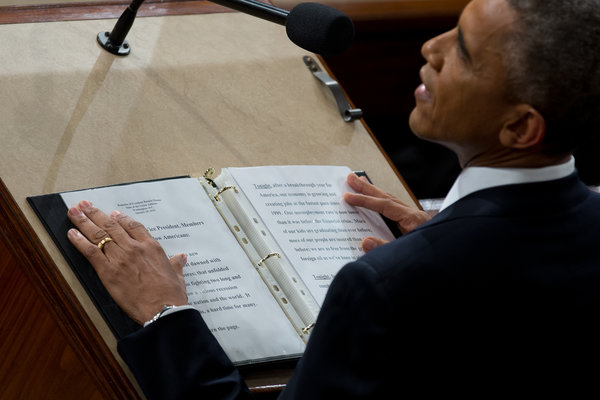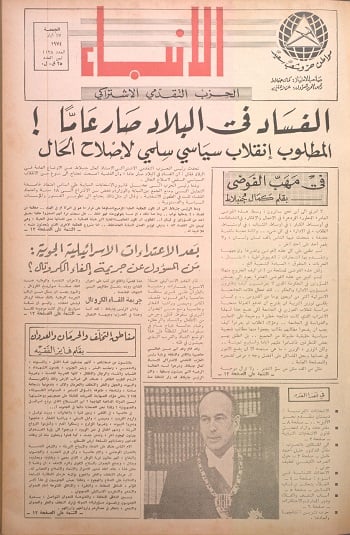Reagan, Obama and Inequality
Nicholas Kristof / New York Times
22 يناير 2015

Since the end of the 1970s, something has gone profoundly wrong in America.
Inequality has soared. Educational progress slowed. Incarceration rates quintupled. Family breakdown accelerated. Median household income stagnated.
“It’s morning again in America” — that was a campaign slogan by President Ronald Reagan in 1984. But, in retrospect, the average American has been stuck since the Reagan era in a predawn darkness of stagnation and inequality, and we still haven’t shaken it off, particularly since 2000. Inequality has increased further under President Obama.
That’s the context for Obama’s call, in his State of the Union address, for greater economic fairness. But first, the caveats. His proposals are dead on arrival in Congress. They won’t be implemented and probably won’t change the public’s thinking: Research by George C. Edwards, a political scientist, finds that presidential speeches rarely persuade the public much.
Remember the 2014 State of the Union address? Of course not. Of 18 proposals in it, there was action on two, according to PBS. Or Obama’s passionate call in his 2013 State of the Union for measures to reduce gun violence? Nothing much resulted, and the word “guns” didn’t even pass his lips this time.
Yet the bully pulpit still can shape the national agenda and nag at the American conscience. I don’t fully agree with Obama’s solutions — how could he skip over early-childhood interventions?! — but he’s exactly right in the way he framed the inequality issue: “Will we accept an economy where only a few of us do spectacularly well?”
Some background. Even with the global Great Depression, the United States performed brilliantly in the first three-quarters of the 20th century, with incomes and education mostly rising and inequality flat or falling — and gains were broadly shared by poor and rich alike. High school graduation rates surged, G.I.’s went to college, and the United States led the world in educational attainment.
And, in part of this remarkable era, the top federal income tax rate exceeded 90 percent. Republicans might remember that point when they warn that Obama’s proposals for modestly higher taxes would savage the American economy.
Then, for average Americans, the roof fell in around the end of the 1970s. The ’70s were “the end of normal,” the economist James K. Galbraith argues in a new book of that title. Afterward, the economy continued to grow over all, but the spoils went to the wealthy and the bottom 90 percent barely benefited.
Median household income is little greater today than it was in 1979. Today, the typical family in Canada appears better off than the typical American family.
By some measures, education — our seed corn for the future — has pretty much stalled. More young American men today have less education than their parents (29 percent) than have more education (20 percent). Among industrialized countries as a whole, 70 percent of 3-year-olds go to preschool; in the United States, 38 percent do.
I wonder if the celebration of unfettered capitalism and “greed is good” since the Reagan era didn’t help shape social mores in ways that accelerated inequality.
In any case, Reagan was right on one point — “the best social program is a productive job” — and Obama offered sound proposals to increase incentives for work. Better child-care and sick-leave policies would also make work more feasible. The United States is the only country among the 34 in the Organization for Economic Cooperation and Development that provides no paid maternity leave.
Oddly, Obama didn’t push early-childhood initiatives, focused on kids from newborns to 5 years old, that have a particularly strong evidence base for creating opportunity.
Early-education initiatives poll well, and some of the leaders in programming have been red states like Oklahoma. So while the Obama agenda is mostly for show, expansion of preschool could actually occur at least at the state level.
Obama rightly heralded the fall in teenage pregnancy rates. But he had little to do with it (although the MTV show “16 and Pregnant” played a role!), and about 30 percent of American girls still get pregnant by age 19. Making reliable birth control available to at-risk teenagers would help them, reduce abortion rates and even pay for itself in reduced social spending later.
In America, we have subsidized private jets, big banks and hedge fund managers. Wouldn’t it make more sense to subsidize kids? So if higher capital gains taxes can pay for better education, infrastructure and jobs, of course that trade-off is worthwhile.
Congressional Republicans seem focused on a pipeline that isn’t even economically viable at today’s oil prices. Let’s hope that the national agenda can broaden along the lines that Obama suggests, so that the last 35 years become an aberration rather than a bellwether.
 عن أمل جنبلاط المتجدد: لبنان يستحق النضال
عن أمل جنبلاط المتجدد: لبنان يستحق النضال
 صحافيون أم عرّافون!
صحافيون أم عرّافون!
 ماذا يجري داخل أروقة بيت الكتائب المركزي؟
ماذا يجري داخل أروقة بيت الكتائب المركزي؟


 عن الخرائط التي تُرسم والإتفاقات التي تتساقط!
عن الخرائط التي تُرسم والإتفاقات التي تتساقط!
 “الإنحراف في الحياة”/ بقلم كمال جنبلاط
“الإنحراف في الحياة”/ بقلم كمال جنبلاط
 هاشتاغ #صار_الوقت يحل أولاً في حلقة جنبلاط
هاشتاغ #صار_الوقت يحل أولاً في حلقة جنبلاط
 طاولة نقاش عن أزمة الصحافة في جامعة AUST
طاولة نقاش عن أزمة الصحافة في جامعة AUST
 عبدالله: ليظهر لنا وزير مكافحة الفساد حرصه في صفقات البواخر والفيول
عبدالله: ليظهر لنا وزير مكافحة الفساد حرصه في صفقات البواخر والفيول
 عبدالله: غريب أمر وزارة مكافحة الفساد!
عبدالله: غريب أمر وزارة مكافحة الفساد!

 Comment to Uri Avnery: How Sad What Is Looming Ahead
Comment to Uri Avnery: How Sad What Is Looming Ahead
 “Not Enough!”
“Not Enough!”
 … لمن لم يقرأ يوسف البعيني/ بقلم وسام شيّا
… لمن لم يقرأ يوسف البعيني/ بقلم وسام شيّا
 كمال جنبلاط في مولده الأول بعد المائة: تعاليمه وأفكاره ما زالت الحلّ/بقلم عزيز المتني
كمال جنبلاط في مولده الأول بعد المائة: تعاليمه وأفكاره ما زالت الحلّ/بقلم عزيز المتني
 رئيس حزب/ وليس (… سابقاً)/ بقلم د. خليل احمد خليل
رئيس حزب/ وليس (… سابقاً)/ بقلم د. خليل احمد خليل
 التوازن السياسي في لبنان
التوازن السياسي في لبنان
 لبنان… مشاريع انقلابية مؤجلة
لبنان… مشاريع انقلابية مؤجلة
 جنبلاط وحَمَلة أختام الكاوتشوك
جنبلاط وحَمَلة أختام الكاوتشوك
 Le Liban est un symbole de tolérance
Le Liban est un symbole de tolérance
 Our Automated Future
Our Automated Future
 The True Origins of ISIS
The True Origins of ISIS
 Les Misérables vs. Macron
Les Misérables vs. Macron
 عذراً أيها المعلم/ بقلم مهج شعبان
عذراً أيها المعلم/ بقلم مهج شعبان
 رساله الى المعلم / بقلم ابو عاصم
رساله الى المعلم / بقلم ابو عاصم
 إلى روح القائد والمعلم كمال جنبلاط/ بقلم أنور الدبيسي
إلى روح القائد والمعلم كمال جنبلاط/ بقلم أنور الدبيسي
 أسرار وعناوين الصحف ليوم الجمعة 14 كانون الاول 2018
أسرار وعناوين الصحف ليوم الجمعة 14 كانون الاول 2018














